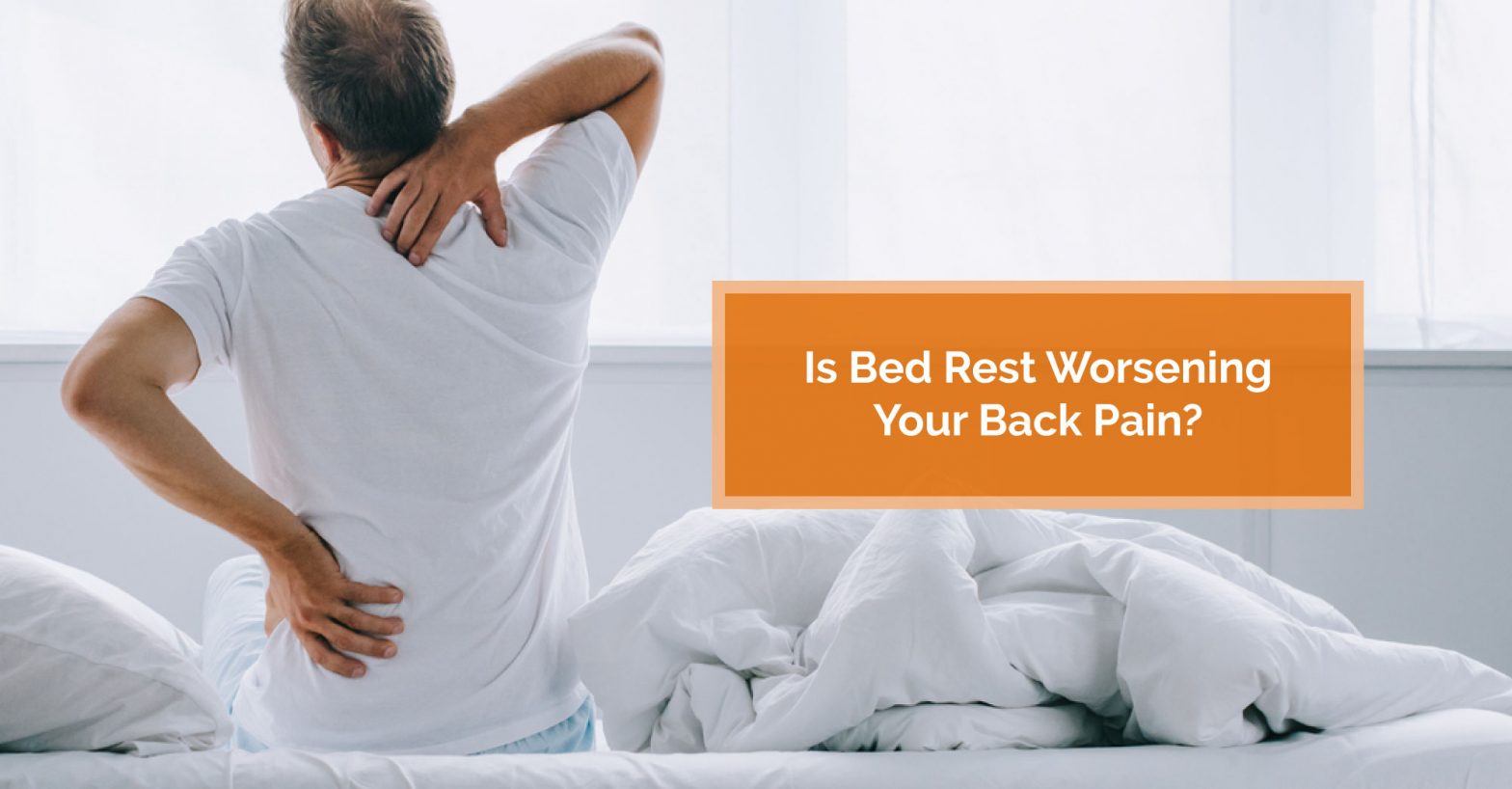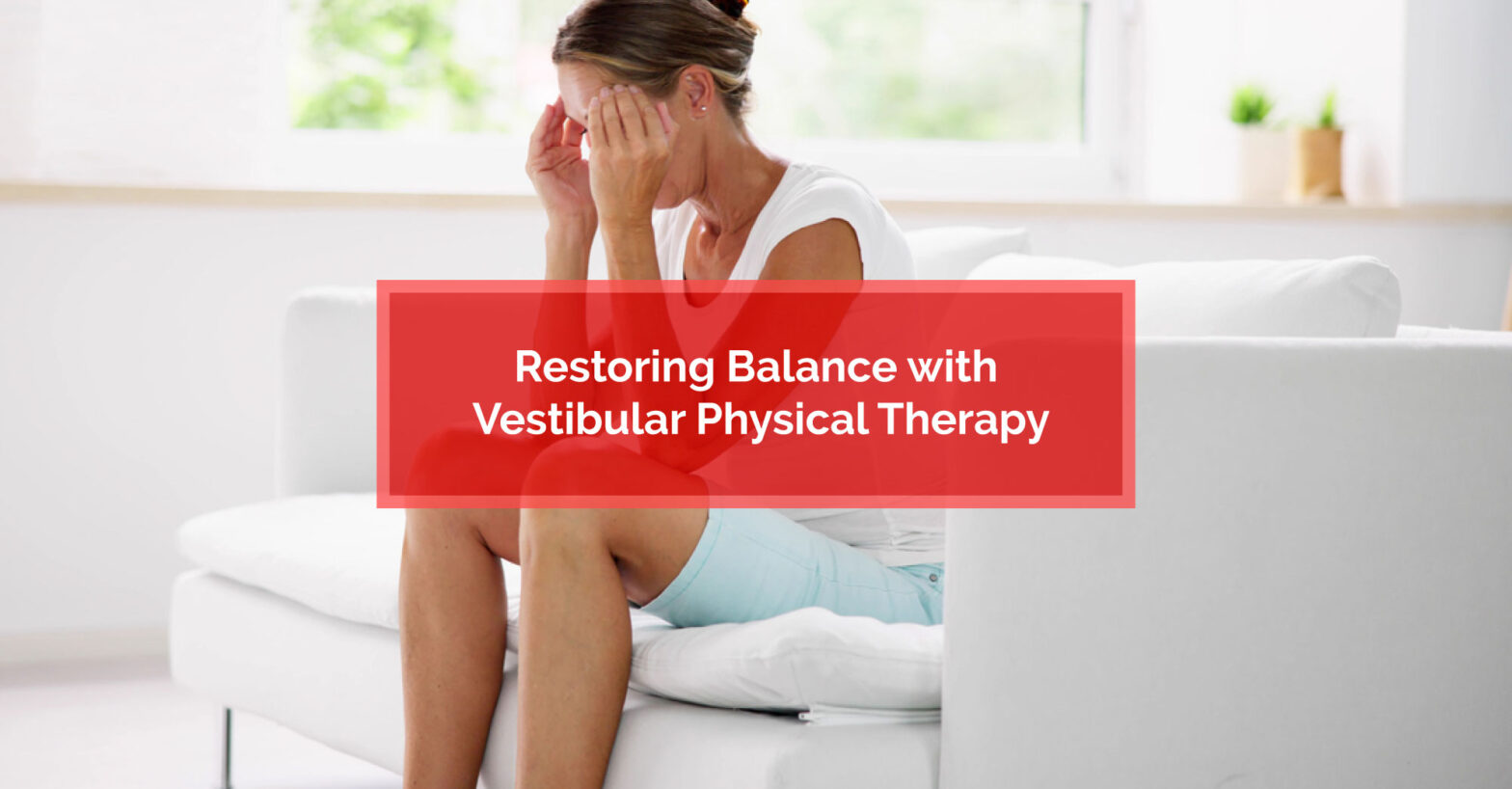Osteoarthritis Treatments: What You Need to Know...
Key Highlights: Osteoarthritis treatments focus on pain relief, restoring joint…
Read More
Posted by Dr. Scott Wilson | 15-Oct-2022
Chronic back pain is a painful condition that is seen in people of all age groups. There are several factors that contribute to back pain such as poor posture, age-related muscle weakening, genetic disc issues, arthritis, and even pregnancy. Prescribing bed rest for back pain used to be the common practice among healthcare professionals but recent studies have shown that prolonged rest may do more harm than good. Resting in the same position for prolonged time periods can reduce the muscle’s strength and flexibility, leading to more severe back pain and possible re-injury in the tissue. Because of this, prolonged periods of bed rest, and even prolonged stretches of inactivity such as sitting, standing, or sleeping, can make your back pain worse. Here’s a quick overview of specifically how prolonged bed rest can worsen your back pain and what you can do about it.
Prolonged bed rest can cause lower back pain, can aggravate existing back pain by weakening your muscle strength or can result in a higher risk of back injury due to spinal instability and insufficient load-bearing capacity of the spine.
Prolonged bed rest or inactivity can have drastic effects on your musculoskeletal system by altering the spinal biomechanics. This can result in:
These changes in the spinal biomechanics can worsen your back pain and can even lead to other musculoskeletal conditions.
Atrophy of spinal extensor muscles is another consequence of prolonged bed rest. It affects the multifidus, and either causes atrophy or hypertrophy of flexor muscles such as the abdominal group and psoas muscle. These muscles aid your spine in the backward and forward movement. It can become weak and reduce mass (atrophy), leading to severe back pain that takes more time to heal.
Prolonged bed rest, and even prolonged sitting or inactivity, can lead to an increase in intra-discal pressure. These pressures on your disc can lead to bulges, protrusions, and even possible herniations. As they worsen, these conditions can lead to a degenerative cascade which increases degenerative changes including stenosis, ligamentous hypertrophy, and facet arthritis.
Here are a few proven and effective ways to treat lower back pain:
The application of ice and heat is a temporary treatment that is proven to provide relief in most cases. Lowering the body temperature with an ice pack can:
Once the painful inflammation has been alleviated you can then apply heat to the lower back to improve the flexibility of soft tissues, muscle movements, and the overall functioning of the lower back.
Exercise and staying active is a widely adopted treatment for back pain and is more effective than bed rest. It not only provides relief, it also strengthens the core and abdominal muscles which helps to guard against reinjury. Doctors often prescribe physiotherapy and exercises as a treatment for lower back pain because physiotherapy includes multiple low-impact exercises that keep your back muscles moving and quicken the recovery process.
Sometimes the cause of lower back pain can be the result of health conditions such as:
For such conditions, temporary treatment methods may not provide relief. In those cases, a combination of interventional therapy and physical therapy may be needed to ease chronic lower back pain. Interventional therapy focuses on leveraging imaging guidance techniques such as fluoroscopy to inject steroids or medications such as opiate and botulinum toxin into the affected soft tissue, joints, or nerve roots.
Active strategies such as physiotherapy and exercise are recommended over passive methods like rest, and medications to treat lower back pain. Physiotherapy is one of the most effective non-invasive treatments that focus on improvements in body function, strengthening core muscles, and providing relief to back pain. Physiotherapy treatments are effective for people of all age groups as it mostly includes back strengthening exercises that can be done by anyone, including senior adults and pregnant women. The treatment mostly includes:
Even though prolonged bed rest can worsen back pain, adequate sleep along with physical activity is recommended for relief. While lower back pain can significantly impact your quality of sleep, there are certain sleeping positions that can relieve lower back pain and considerably minimize the effects at night.
Avoid sleeping positions that can put pressure on your spine, neck, shoulders, hips, lower back, knees, and heels. These sleeping positions have a significant impact on your body’s alignment and can significantly contribute to lower back pain. Sleeping on your stomach is the worst position for this condition. It flattens the natural curve of your spine and puts more pressure on your spine’s muscles and joints. Continuously sleeping on your stomach can also result in neck or shoulder pain because your neck is rotated and held at a different angle.
Other effective ways to reduce back pain during sleep include:
Answer: It depends on the nature of your condition but, generally speaking, it’s better to avoid prolonged bed rest and stay as active as possible. Long periods of inactivity can contribute to a weakening of your core muscles and will only make your condition worse over the long term. It can also lead to other health challenges.
Answer: If your lower back pain is caused by sprains, muscle spasms or other minor impacts, you can try:
Answer: As always, too much bed rest can worsen any back condition. For herniated discs, bed rest should not exceed 48 hours. While performing daily activities, you should take frequent rest breaks and avoid sitting for long periods of time.
Most often, lower back pain is caused by strain in the muscles, spinal atrophy, pinched nerves, muscle weakness, or irritated joints or ligaments in the back. In these cases, physiotherapy can be a very effective form of treatment that can provide lasting relief.
If you or someone you know is struggling with back pain, contact us today and let us show you why, at Physiomed, Healthier Starts Here.

Key Highlights: Osteoarthritis treatments focus on pain relief, restoring joint…
Read More
Key Highlights: Runner's knee, or patellofemoral pain syndrome, is a…
Read More
Key Highlights: Upper back and neck pain can be caused…
Read More
Key Highlights: Many people want to lose belly fat for…
Read More
Key Highlights: Vestibular physical therapy, or physiotherapy, is a specialized…
Read More
Key Highlights: Tennis elbow, or lateral epicondylitis, is a condition…
Read More